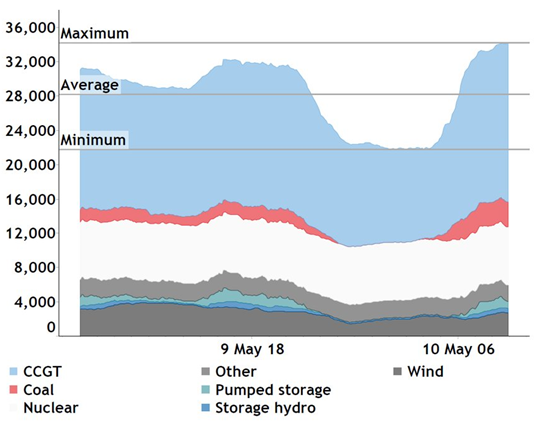In the night of Tuesday 10th of May 2016 none of the electricity in Britain’s national grid has been generated by coal-fired power plants due to a breakdown of several power plants.

For the first time since the 19th century, thus effectively since the construction of Britain’s power grid no electricity from coal has been fed-into the grid. While coal still has been one of the biggest power sources in the UK in 2013, a carbon tax and low gas prices started to push generation of electricity in coal-fired power plants out of the profitability range. The major part of Britain’s power is now sourced from combined cycle gas turbines, wind and nuclear, a fact unthinkable only two years ago.
On Tuesday night a large number of coal and gas-fired power plants have been on maintenance, while the output of wind power was 500 MW lower than expected. These two factors combined with the partial failure of a power cable for importing electricity from continental Europe led the grid operator National Grid to issue a “Notification of Inadequate System Margin” (NISM). As a result, the remaining power plants had to provide an additional 1500 MW of capacity to ensure a balance between supply and demand.
The highest price paid to a power plant under the issuance of the NISM during those hours of strained supply was 1250 €/MWh, 25 to 30 times the usual price of electricity in Britain. The load during the four hours without coal on the grid was met by roughly 11 GW from combined cycle gas turbine, 6.8 GW nuclear, 2 GW import and 1.8 GW wind as figure 1 shows.

Source: Reneweconomy
Figure 1: Metered power feed-in in UK
Britain’s still relies heavily on an aging and carbon-intensive power plant fleet and aims at taking all coal-fired power plants without carbon capture and storage off the grid until 2025.



